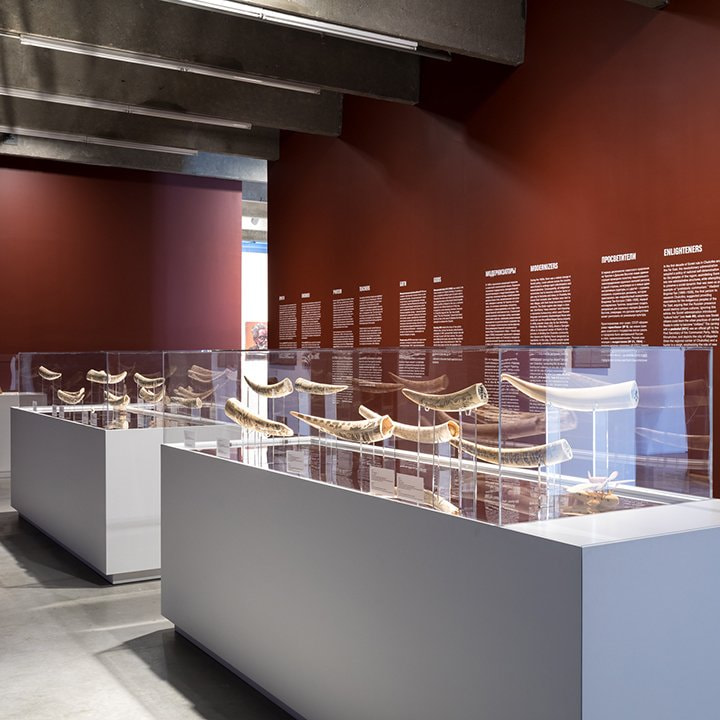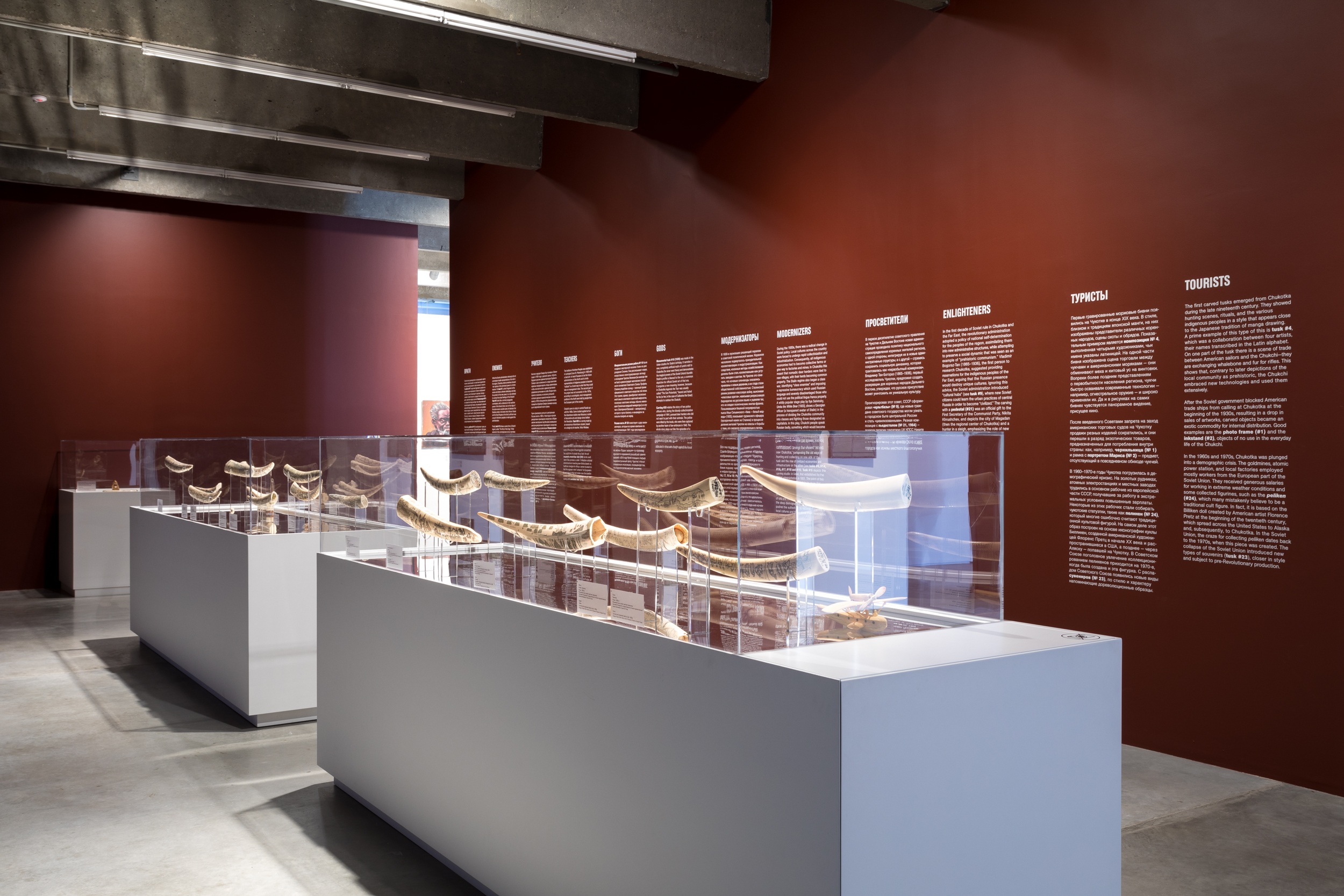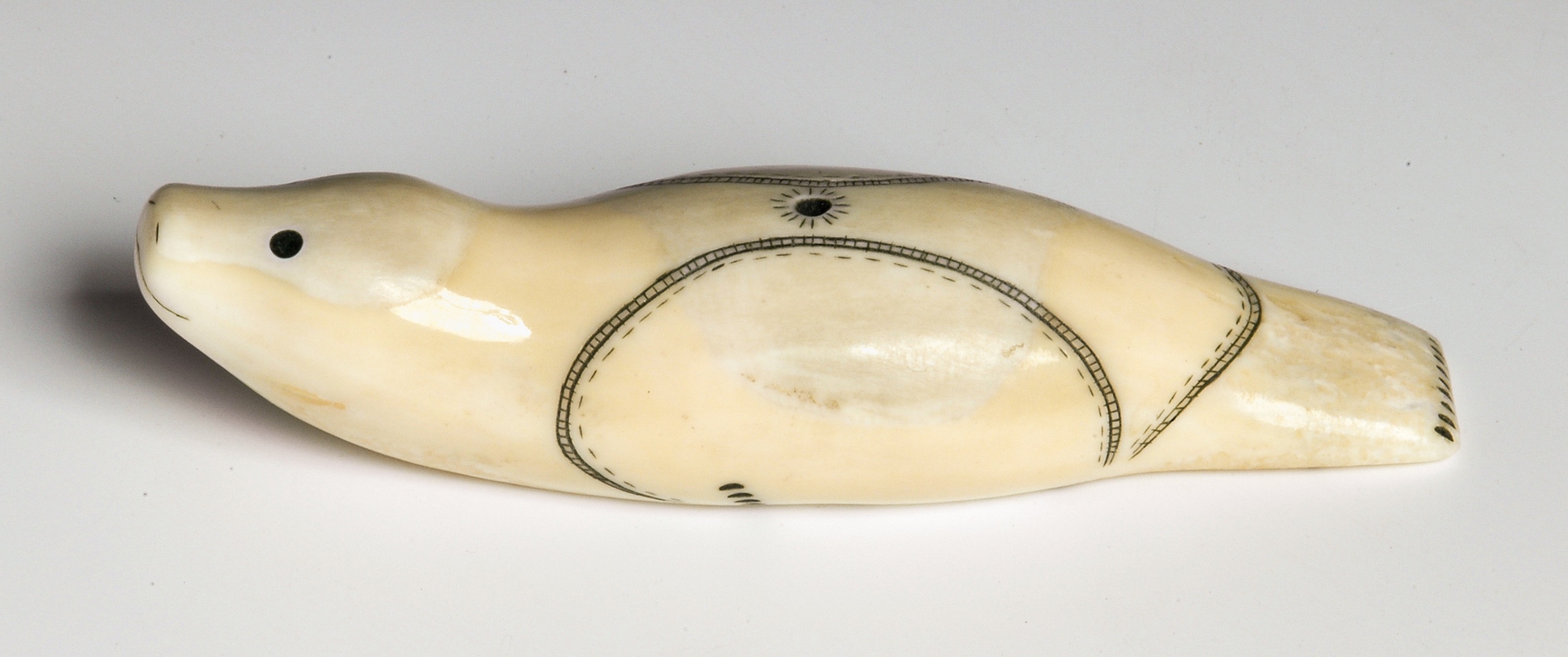Mikhail Bronshtein, Chief Researcher at the Department of the Caucasus, Central Asia, and Siberia at the Russian State Museum of Oriental Art, discusses ivory carving in Chukotka and its evolution over the past 2,000 years, while also sharing his view of the exhibition Congo Art Works: Popular Painting.
The Chukchi and Eskimo art of ivory carving falls into that category of artefacts whose vision, developed by experts, and that of the general public differ almost entirely. Figures of seals and white bears, carved from walrus bone, and whole walrus tusks, covered with graphic images depicting scenes from the life of hunters and reindeer breeders, are part of many museum collections and can be often seen displayed at the exhibitions of folk artistic crafts. At first glance, these works are nothing more than exotic souvenirs, while the art of bone-carving, popular among the peoples of Chukotka, is widely regarded as a recent phenomenon that emerged when people from the “Mainland” began traveling to the region.
Art historians, ethnographers, and archaeologists have a different attitude to the Chukchi and Eskimo walrus bone artefacts, seeing them as monuments of art that appeared no later than the turn of the eras, an art that was initially ritual and closely connected to the mythology and magic of the Arctic peoples.
How did the most ancient Chukchi ivory carving pieces, among those ones we have record of, look like? What role did they play in the life of the aboriginal communities? Why did Arctic trailblazers, while occupying the previously uninhabited shores of polar seas, paid so much effort and attention to the complicated art of walrus ivory carving and engraving? How were the visual traditions of the sea Arctic hunters changing over time? And how does the art of ivory carving reflect the dramatic processes of the traditional Northern cultures’ decay that is happening today? Chief Researcher of the Department of the Caucasus, Central Asia and Siberia at the State Museum of Oriental Art Mikhail Bronshtein will answer these questions in his talk.




